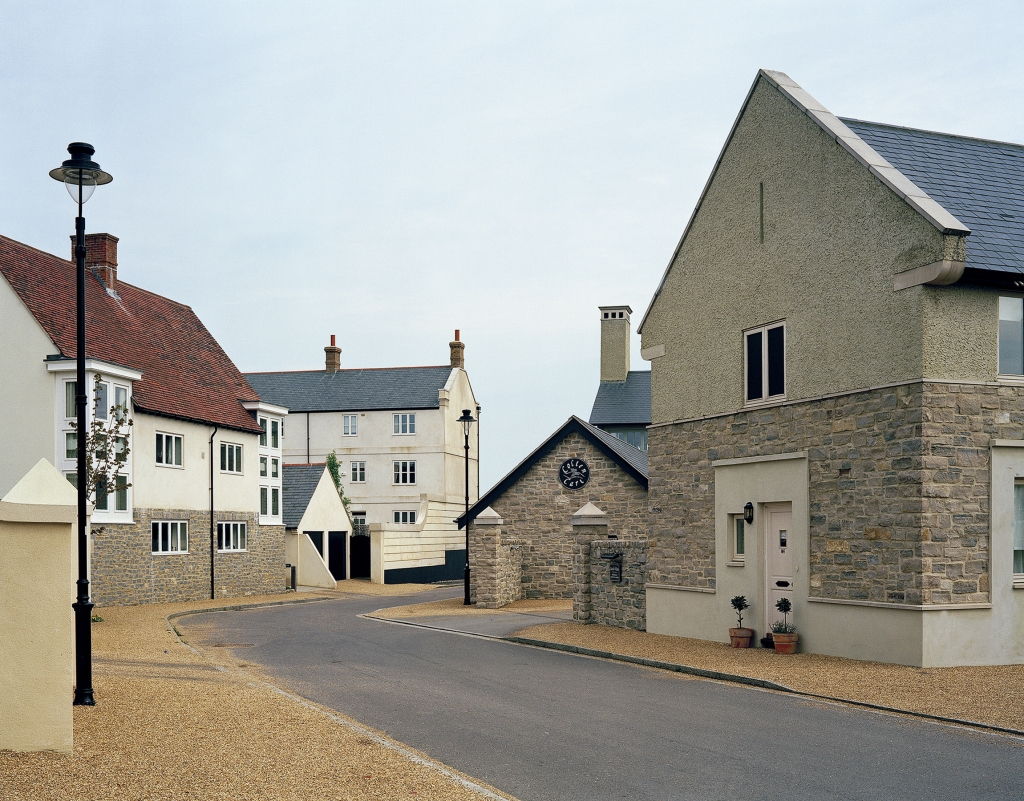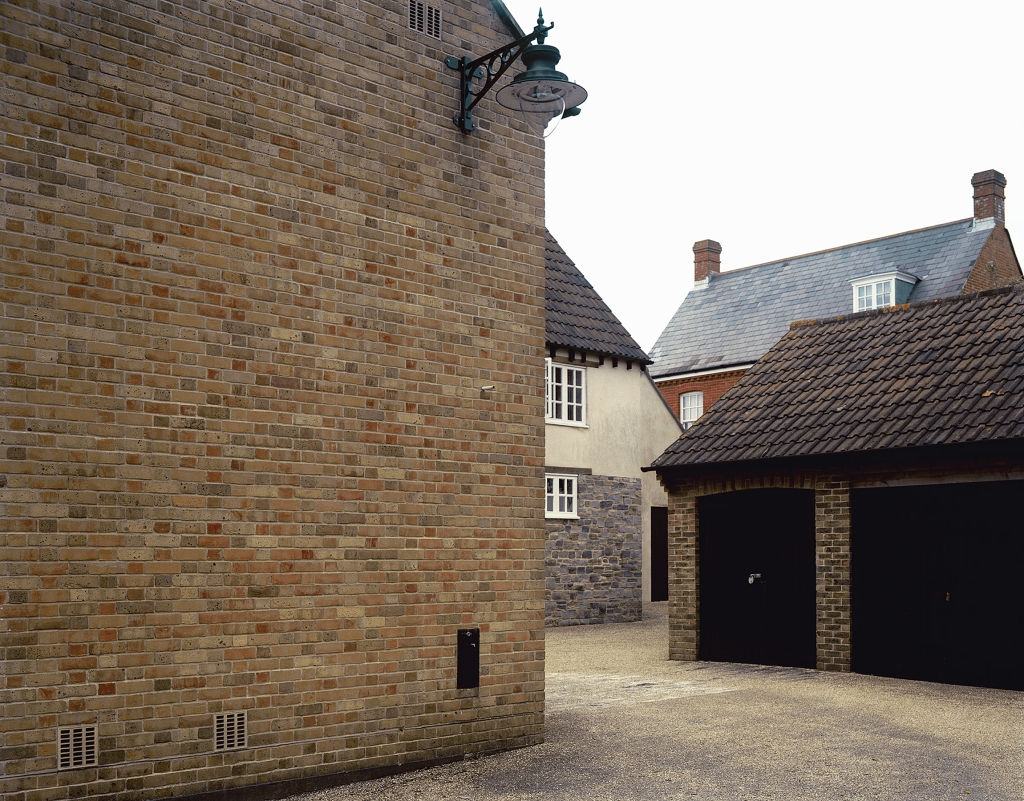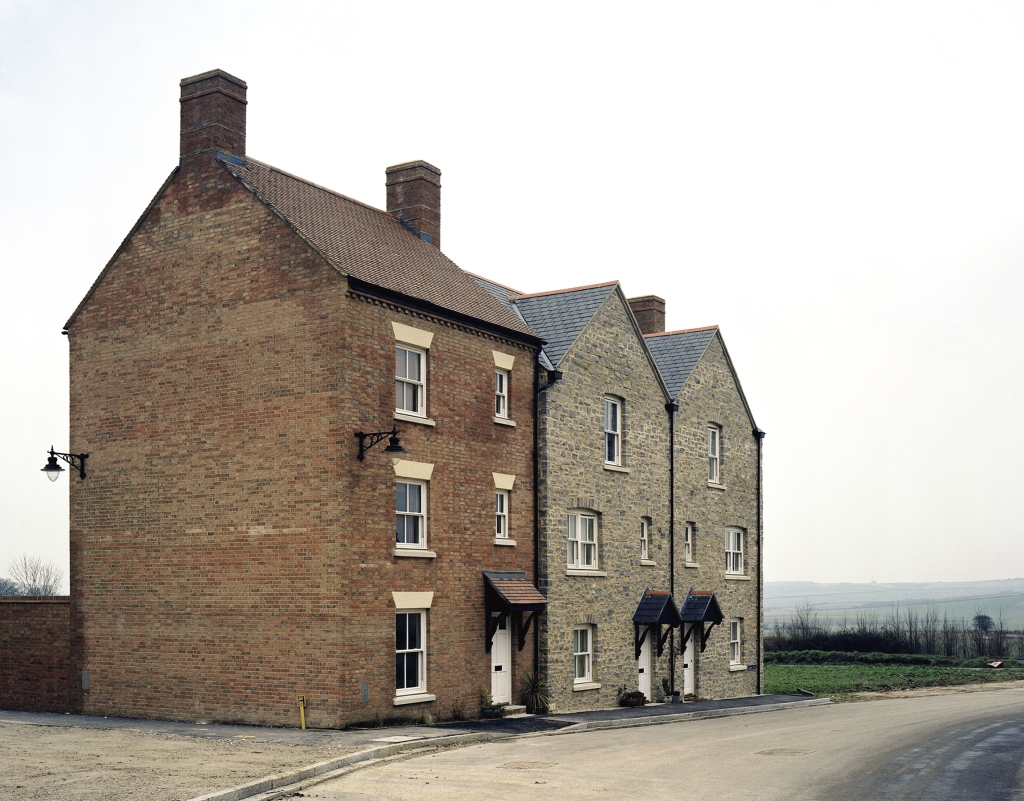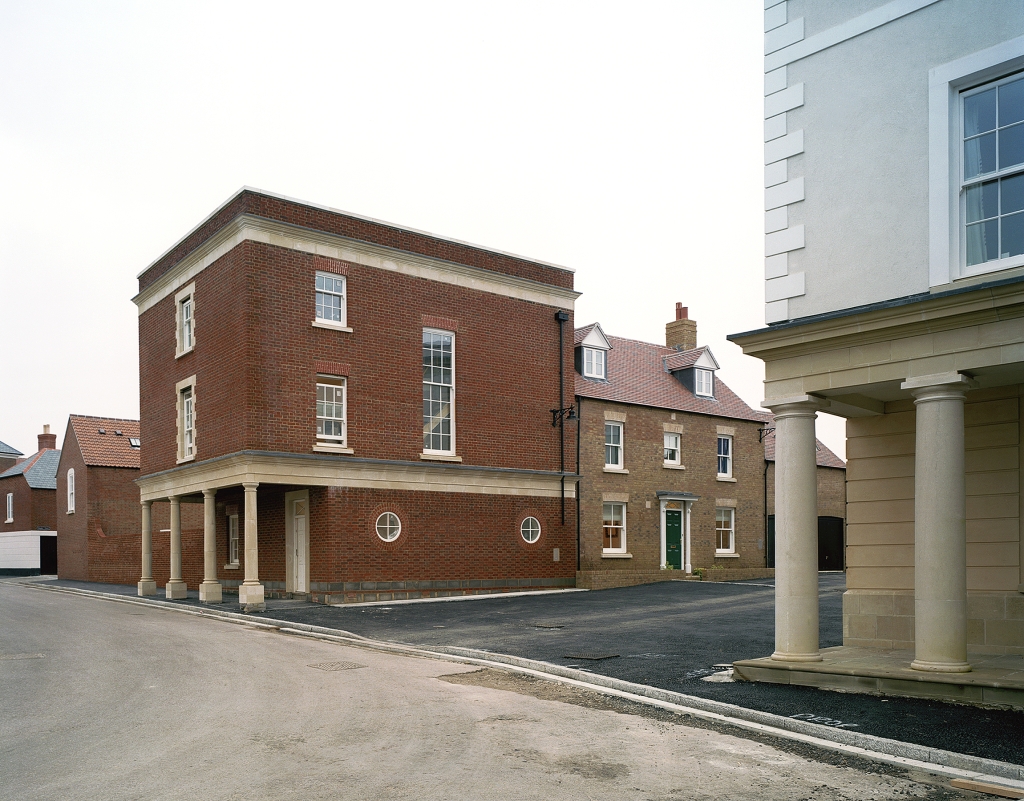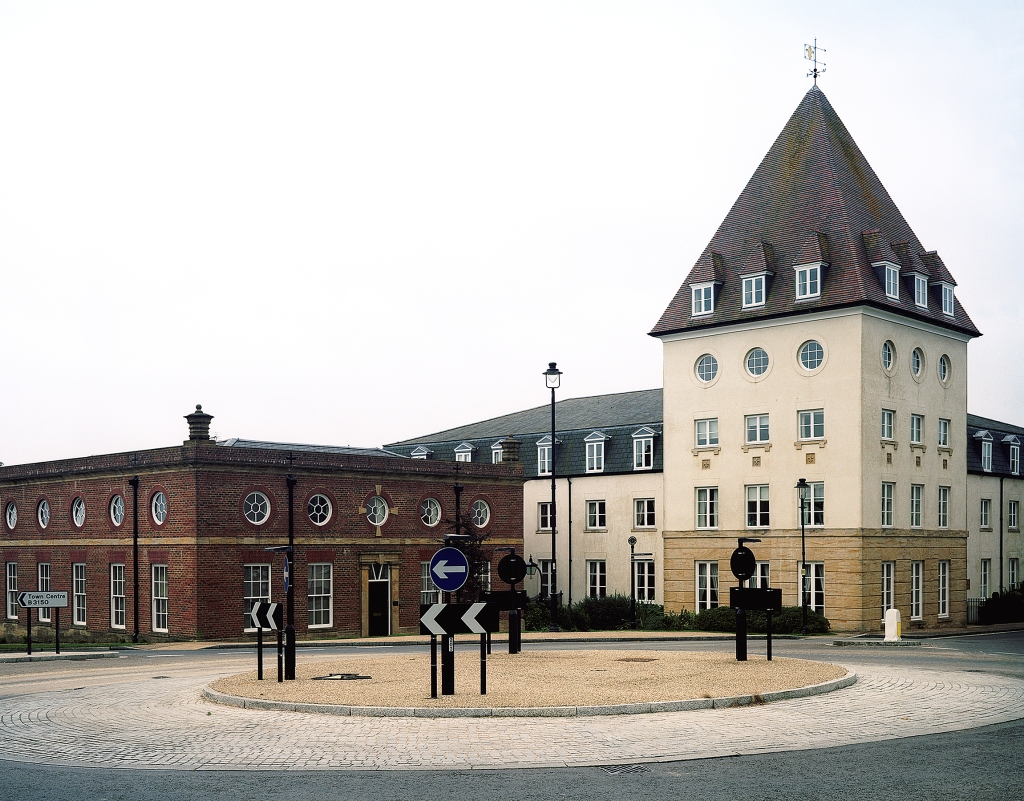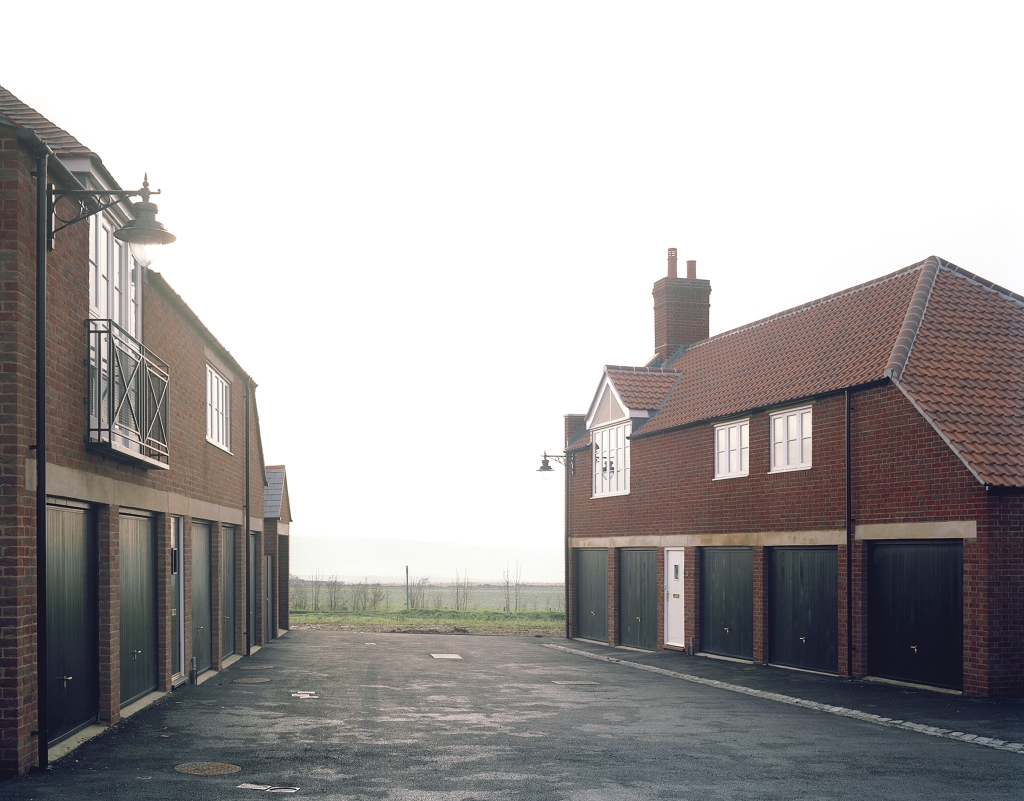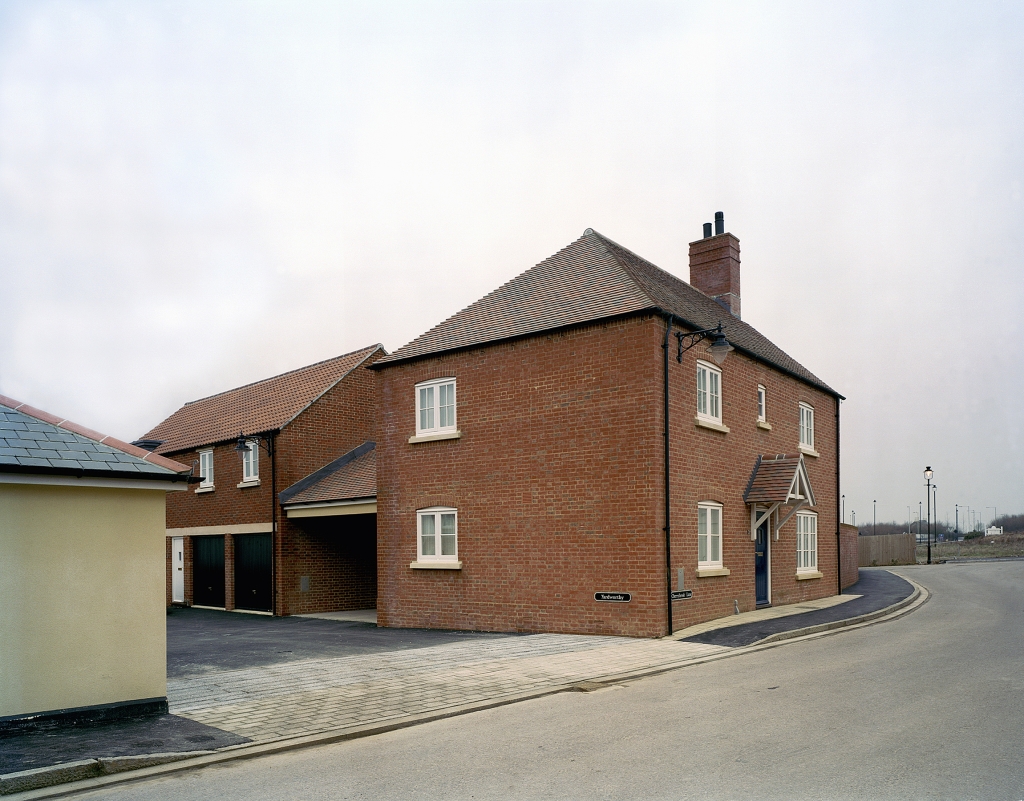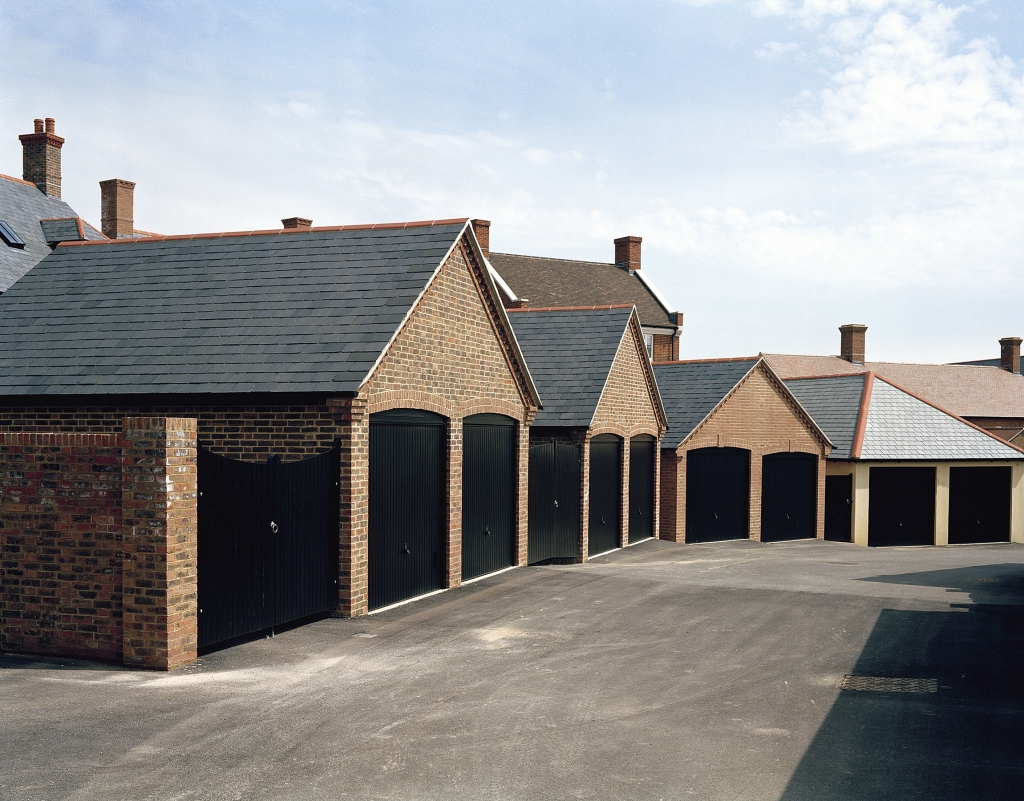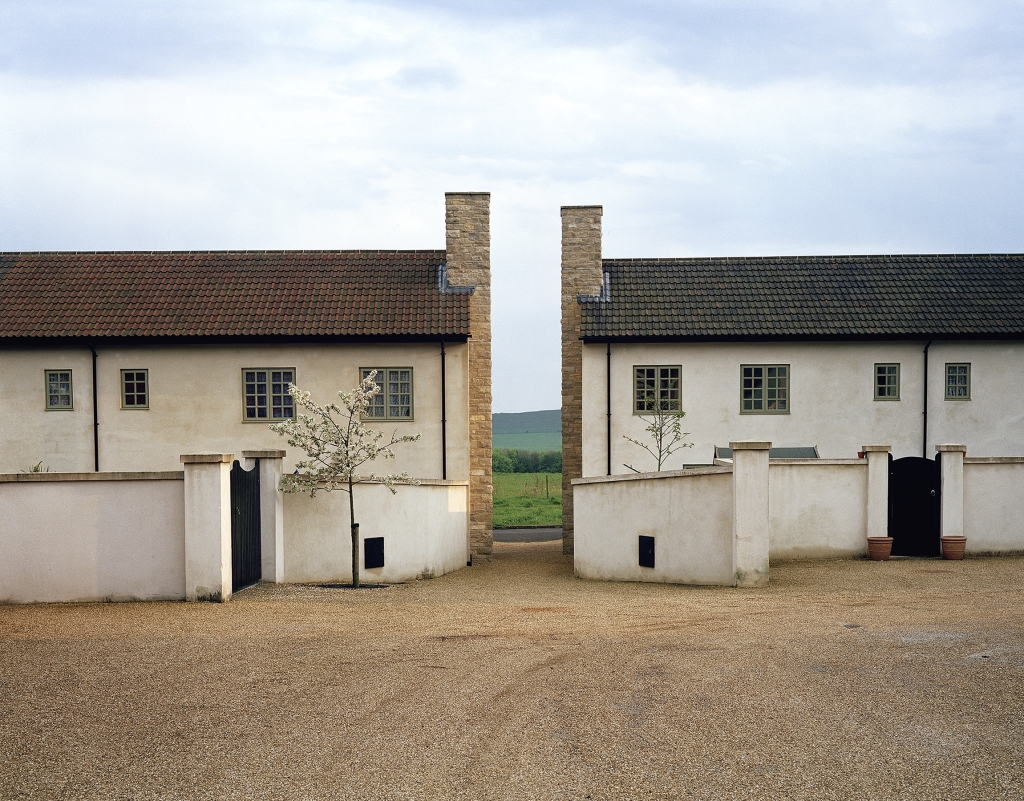Nonsuch
Nonsuch concentrates on the ‘model’town Poundbury and presents an interesting exploration of the inhabited space and its artificiality.
Poundbury, a model urban development in Dorset is an engaging phenomenon in the history of British urban planning, since it is amongst the most recent of model or new towns including such major post-World War 2 developments such as Milton Keynes or those philanthropic projects of the industrial revolution such as Bourneville, New Lanark or Port Sunlight. The town of Poundbury is built on land owned by the Duchy of Cornwell and planned by the architect Leon Krier, owning its conceptual structure to the principles set out in Prince Charles book “A Vision of Britain” (1989).
The intellectual roots of the photographic series Nonsuch are within the tradition of utopia and comprise Klenz’ engagement with the ‘perfect place’ and the ‘ideal civic society’. In her series, she is mostly interested in the exploration of the material realisation of what often remains imaginary. Nonsuch presents a photographic series that is not reliant on human presence but that finds its drama and allegory in the physical and architectural presence of the space itself. Klenz deliberately does not represent this form of urban planning as the exemplary urban addition but rather intends to create visually an urban space represented as a folly that seems to make the habitation and public life awkward.
The photographic series presents an uncanny feel of estrangement in its depiction of an abandoned town, devoid of people, litter and personal details – like a perfect backdrop for stage sets before or after a performance, separating the citizens from their city. A town that one generally considers through its cultural heritage to be defined by the inhabitants taste and activities, is shown in this photographic series as being prescribed, reduced to neutral constructions – a building code of zero cultural or social weight. Cleanliness and order reign – the photographs hyperbolising the sense of perfection that is built into the geographic space.
Indeed, some of the photographs might be of architectural models and Klenz deliberately plays with this edge of the space in-between artifice and reality. Nonsuch’s disregard for the human’ makes explicit that there is no-one to look at, no-ones presence the viewer should acknowledge. The photographic series questions whether this form of new urbanism can only ever remain a model for so long as it never makes manifest those citizens for whom this ideal urban space is modelled for and whose residual subjectivities it would shape through the ideological over-determination of its architecture and layout.
